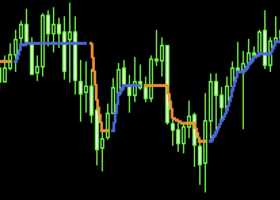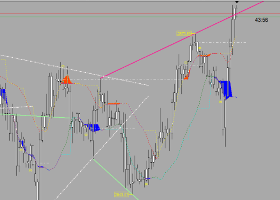The statistics are brutal, but they reveal a harsh truth: the vast majority of traders end up losing money. If you find yourself in that 90 percent, it is time to take a long, hard look at your trading habits and strategies. This post is designed to provide real value by exploring the common pitfalls, the mindset issues, and the practical steps you can take to shift your trading from a losing proposition to a disciplined, sustainable process.

Understanding the Statistics
Most new traders enter the market with high hopes and grand ambitions. They often believe that they can beat the system with a few tips from influencers or by following a hype-driven strategy. However, the reality is that the market is a highly competitive environment. It does not care about your intentions. Most traders lose money because they do not have a solid plan, proper risk management, or the discipline to stick to a proven strategy.
Consider these key factors:
- Many traders trade on impulse rather than based on research.
- They fail to implement rigorous risk management and proper stop-loss levels.
- They often let emotions like fear and greed dictate their decisions.
- They lack the patience to backtest and optimize their strategies over time.
The Common Pitfalls of Trading
If you are among the 90 percent, your trading losses are likely a result of one or more of the following issues:
- Emotional Trading: Allowing emotions to drive your trades leads to impulsive decisions. Fear causes you to exit positions too early, and greed makes you hold on too long.
- Lack of a Robust Strategy: Relying on gut instincts or random advice from influencers rarely works. A successful trading strategy must be based on research, technical analysis, and historical data.
- Poor Risk Management: Without a clear risk management plan, even a few bad trades can wipe out your account. Over-leveraging and ignoring stop-loss settings are common mistakes.
- Insufficient Backtesting: Jumping into live trading without extensive backtesting means you are essentially gambling with your money. An untested strategy is a recipe for disaster.
- Overtrading: Trying to recover losses by trading too frequently often results in further losses. Quality over quantity should be the mantra for any trader.
Changing the Trading Mindset
To move away from the 90 percent who lose money, you must fundamentally change how you approach the market. Here are some steps to begin that transformation:
- Adopt a Data-Driven Approach: Base your decisions on objective data and thorough analysis. Rely on charts, technical indicators, and historical trends rather than intuition alone.
- Implement Strict Risk Management: Determine in advance how much of your capital you are willing to risk on each trade. Set stop-loss orders and never exceed your risk limits.
- Develop and Test Your Strategy: Invest time in developing a clear, consistent strategy. Backtest it extensively to see how it would have performed under different market conditions.
- Eliminate Emotional Interference: Recognize that emotions like fear and greed are your worst enemies. Consider using automated trading systems that enforce your rules without hesitation.
- Stay Disciplined: Follow your trading plan rigorously. Even when the market moves against you, stick to your predetermined exit strategy. Discipline is what separates successful traders from the rest.
Real-Life Examples of Success Through Discipline
Successful traders do not rely on lucky breaks. They achieve success through meticulous planning, continuous learning, and disciplined execution. For instance:
- A trader who backtested his strategy over several years managed to refine his entry and exit points, significantly reducing his losses.
- Another trader implemented strict risk management rules and limited his exposure per trade. This approach allowed him to survive market downturns and eventually profit during periods of high volatility.
- Many professional trading firms use automated systems to remove emotional decision-making, resulting in more consistent performance over time.
These examples illustrate that success in trading is not about quick fixes or shortcuts. It is about building a robust, disciplined framework that can withstand the uncertainties of the market.
Looking Ahead: Embracing Automation and Tested Solutions
As you refine your trading approach, remember that automation and solid risk management are essential for long-term success. In future posts, I will share tested solutions and expert advisors that have proven effective in enforcing discipline and optimizing performance. These tools are designed to help you remove the emotional element from your trading and build a strategy that truly stands up to market realities. Stay tuned for more insights and practical guides on integrating these systems into your trading routine.
Final Thoughts
The market does not care about you. It rewards those who are prepared, disciplined, and methodical. If you are losing money because you are trading on emotions, ignoring risk management, or relying on untested strategies, you are setting yourself up to join the 90 percent who lose money.
Ask yourself: Are you ready to change your approach? Are you willing to invest the time and effort needed to develop a strategy that works? The choice is yours. It is time to take a step back, re-evaluate your methods, and commit to a disciplined, data-driven trading strategy. Your future success in the market depends on it.
Your move.
Related Posts You Might Enjoy:
- The Market Doesn’t Care About You, So Why Are You Trading Like It Does?
- What Are Expert Advisors and How Can They Automate Your Trading?



